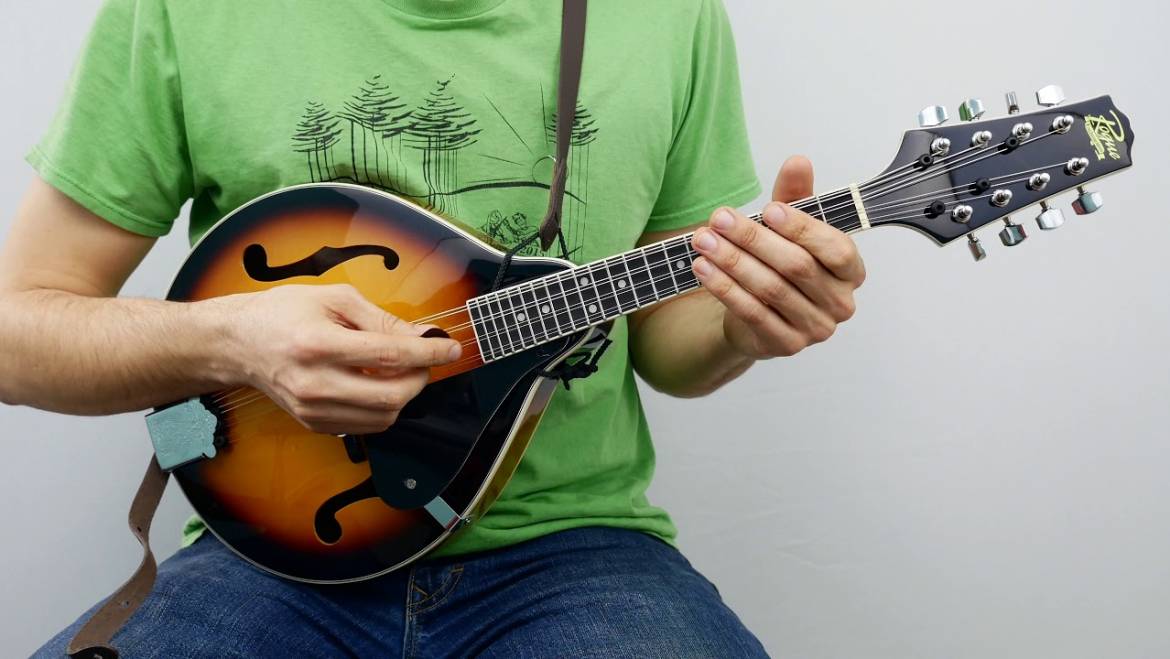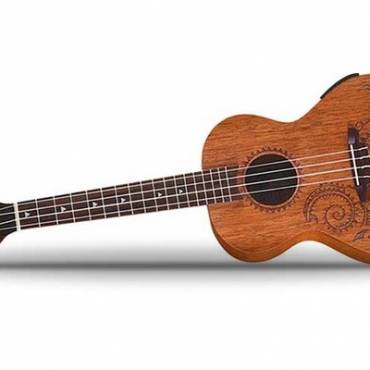A mandolin is a stringed musical instrument in the lute family and is usually plucked with a plectrum or “pick“. It commonly has four courses of doubled metal strings tuned in unison (8 strings), although five (10 strings) and six (12 strings) course versions also exist. The courses are normally tuned in a succession of perfect fifths. It is the soprano member of a family that includes the mandola, octave mandolin, mandocello and mandobass.
There are many styles of mandolin, but three are common, the Neapolitan or round-backed mandolin, the carved-top mandolin and the flat-backed mandolin. The round-back has a deep bottom, constructed of strips of wood, glued together into a bowl. The carved-top or arch-topmandolin has a much shallower, arched back, and an arched top—both carved out of wood. The flat-backed mandolin uses thin sheets of wood for the body, braced on the inside for strength in a similar manner to a guitar. Each style of instrument has its own sound quality and is associated with particular forms of music. Neapolitan mandolins feature prominently in European classical music and traditional music. Carved-top instruments are common in American folk music and bluegrass music. Flat-backed instruments are commonly used in Irish, British and Brazilian folk music. Some modern Brazilian instruments feature an extra fifth course tuned a fifth lower than the standard fourth course.
Other mandolin varieties differ primarily in the number of strings and include four-string models (tuned in fifths) such as the Brescian and Cremonese, six-string types (tuned in fourths) such as the Milanese, Lombard and the Sicilian and 6 course instruments of 12 strings (two strings per course) such as the Genoese.[2] There has also been a twelve-string (three strings per course) type and an instrument with sixteen-strings (four strings per course).
Much of mandolin development revolved around the soundboard (the top). Pre-mandolin instruments were quiet instruments, strung with as many as six courses of gut strings, and were plucked with the fingers or with a quill. However, modern instruments are louder—using four courses of metal strings, which exert more pressure than the gut strings. The modern soundboard is designed to withstand the pressure of metal strings that would break earlier instruments. The soundboard comes in many shapes—but generally round or teardrop-shaped, sometimes with scrolls or other projections. There is usually one or more sound holes in the soundboard, either round, oval, or shaped like a calligraphic f (f-hole). A round or oval sound hole may be covered or bordered with decorative rosettes or purfling.
Click here to sign up for Mandolin Lessons!!




